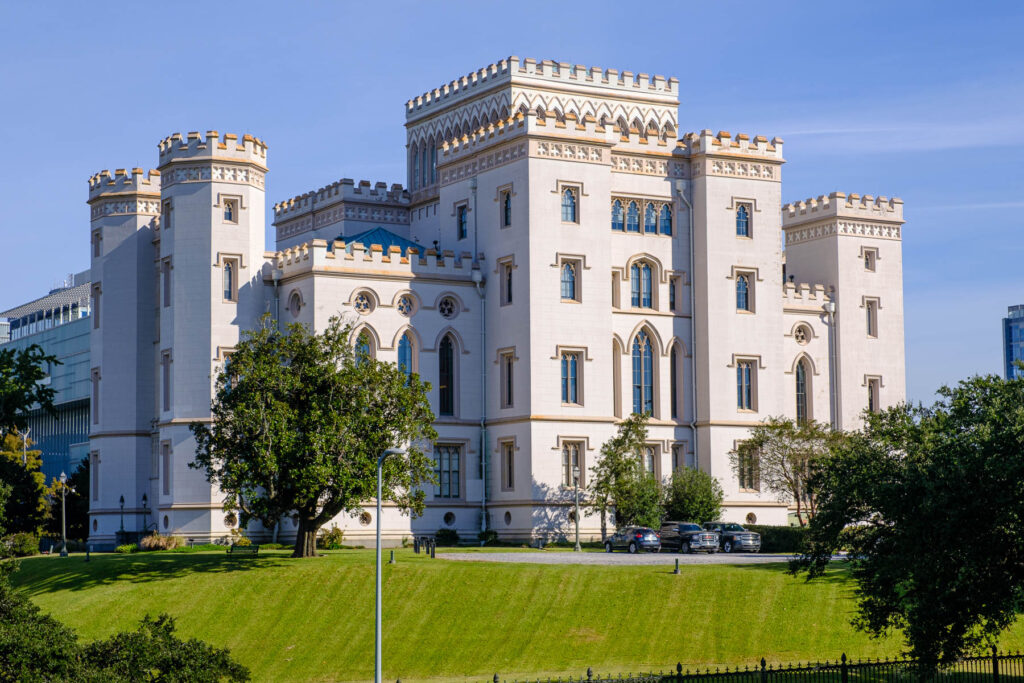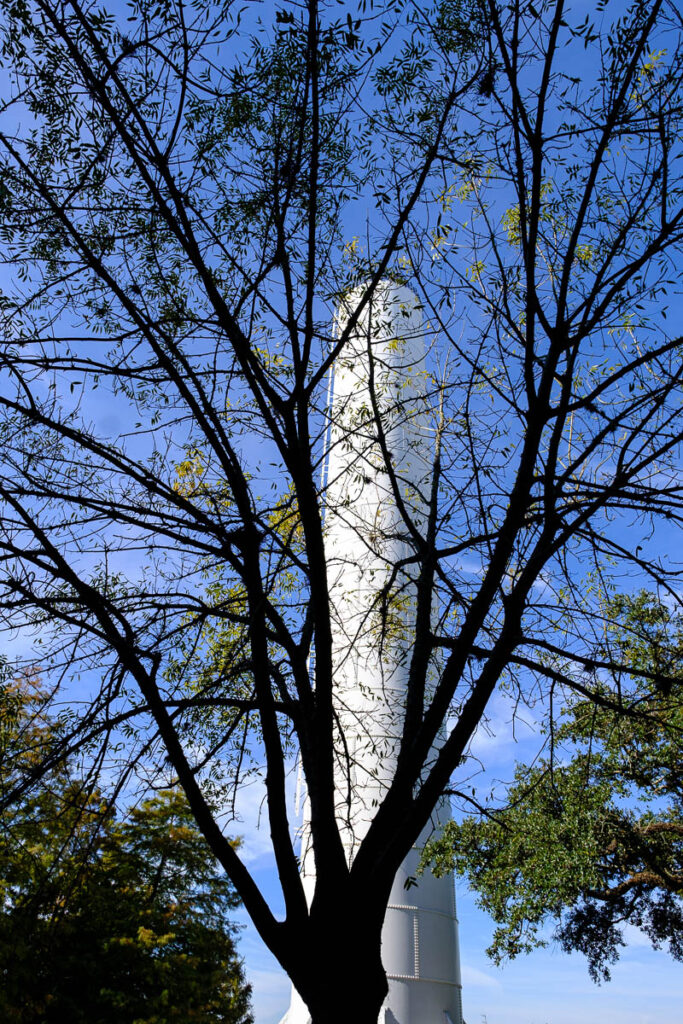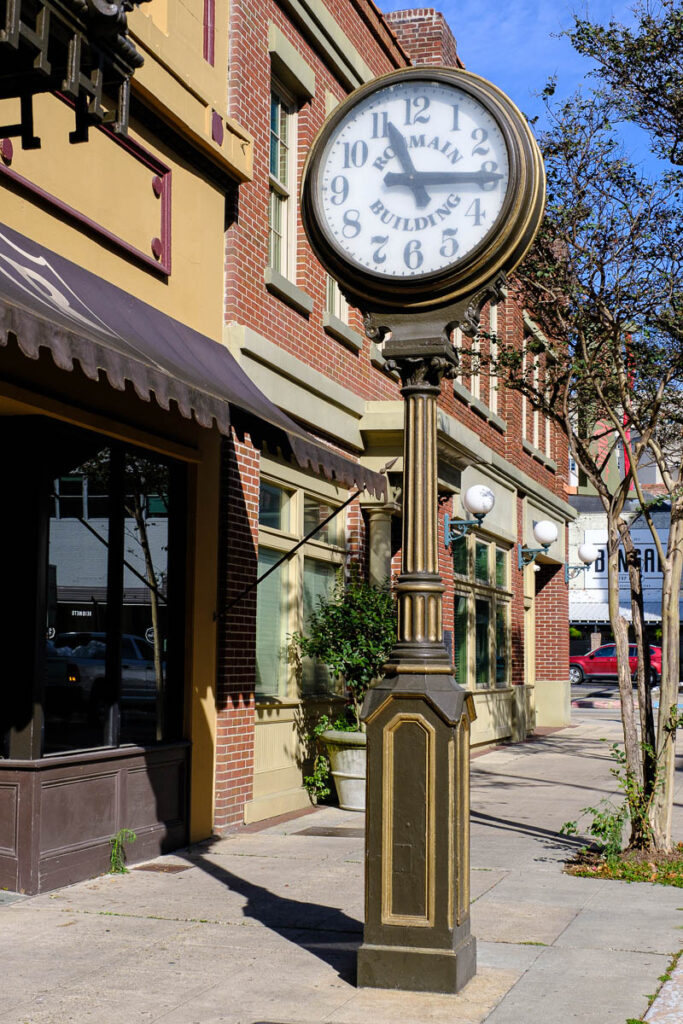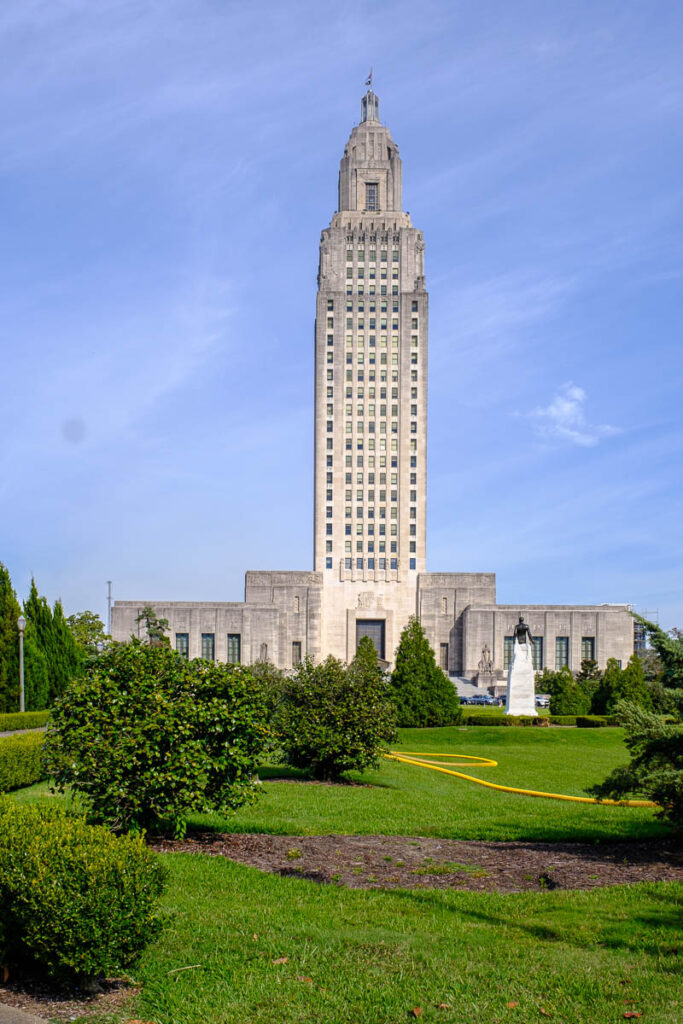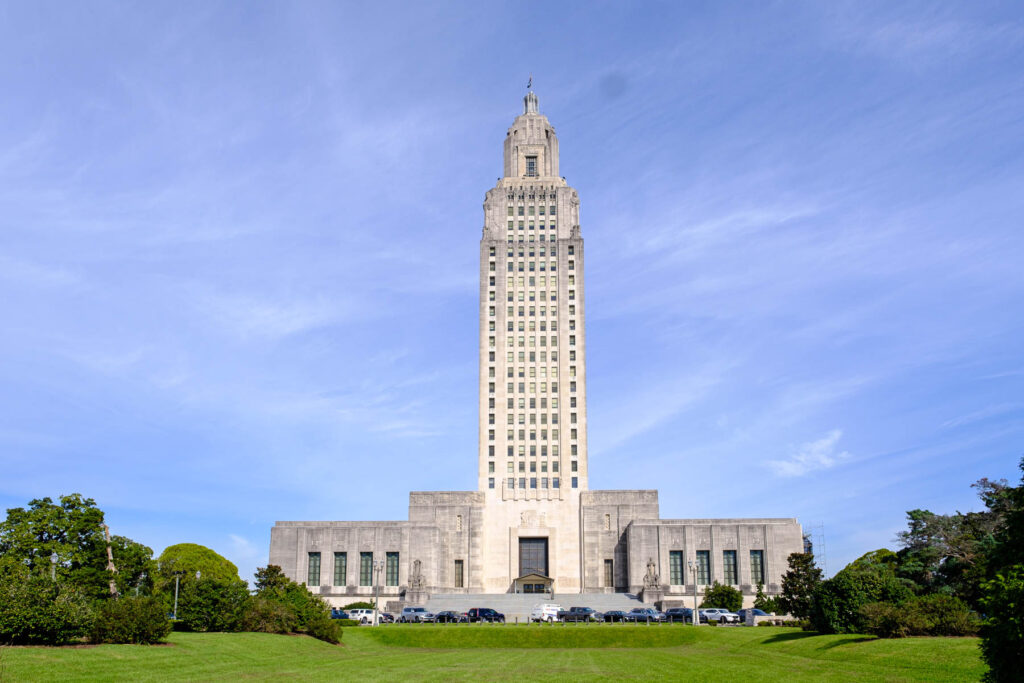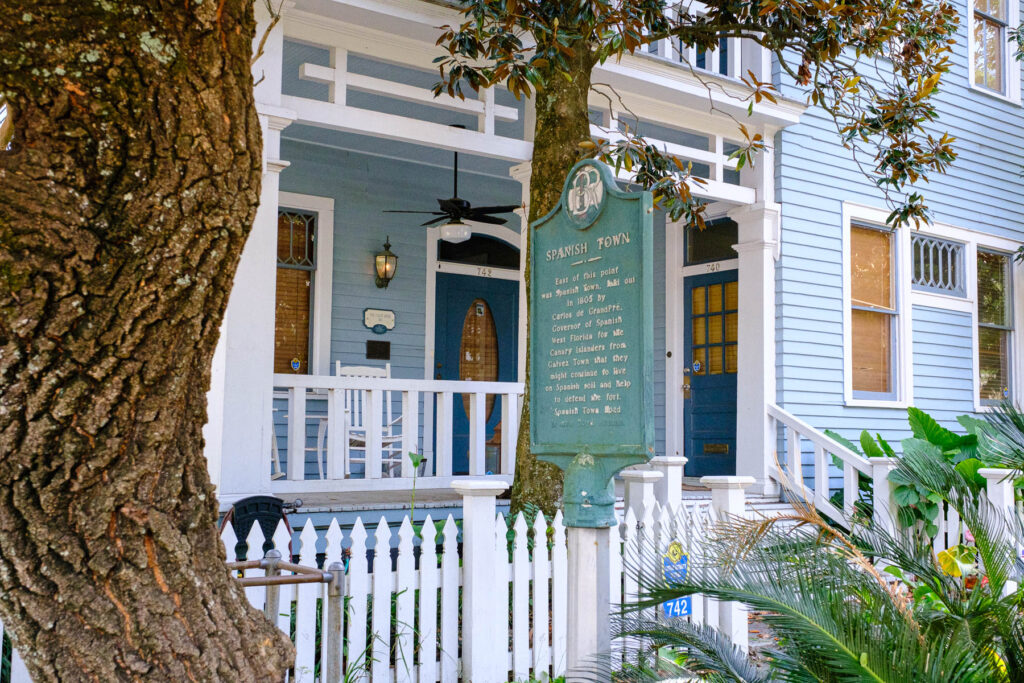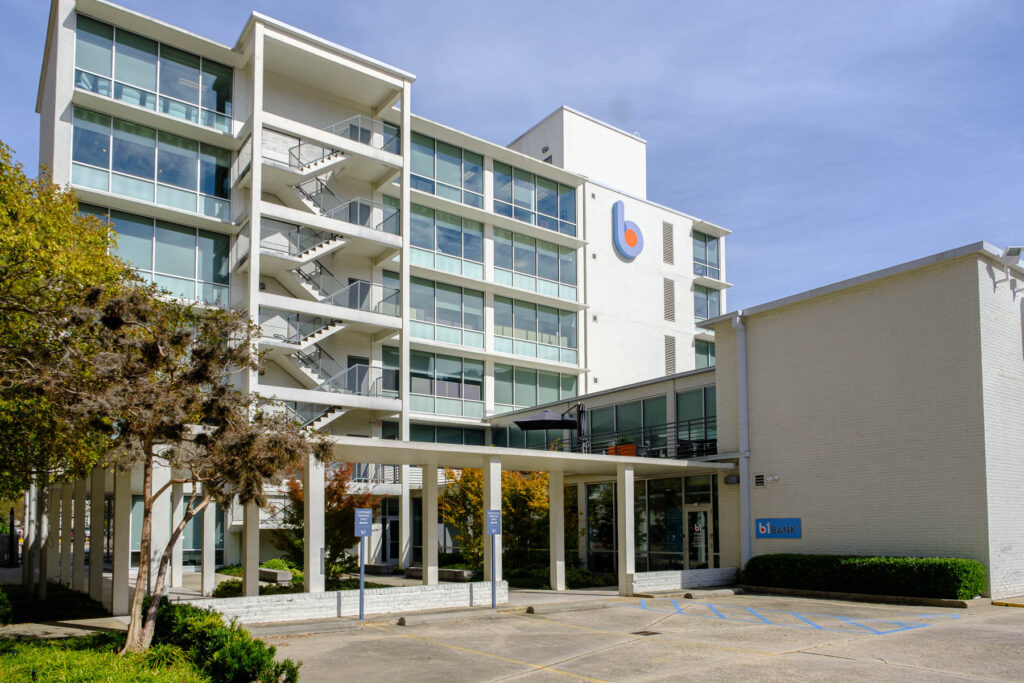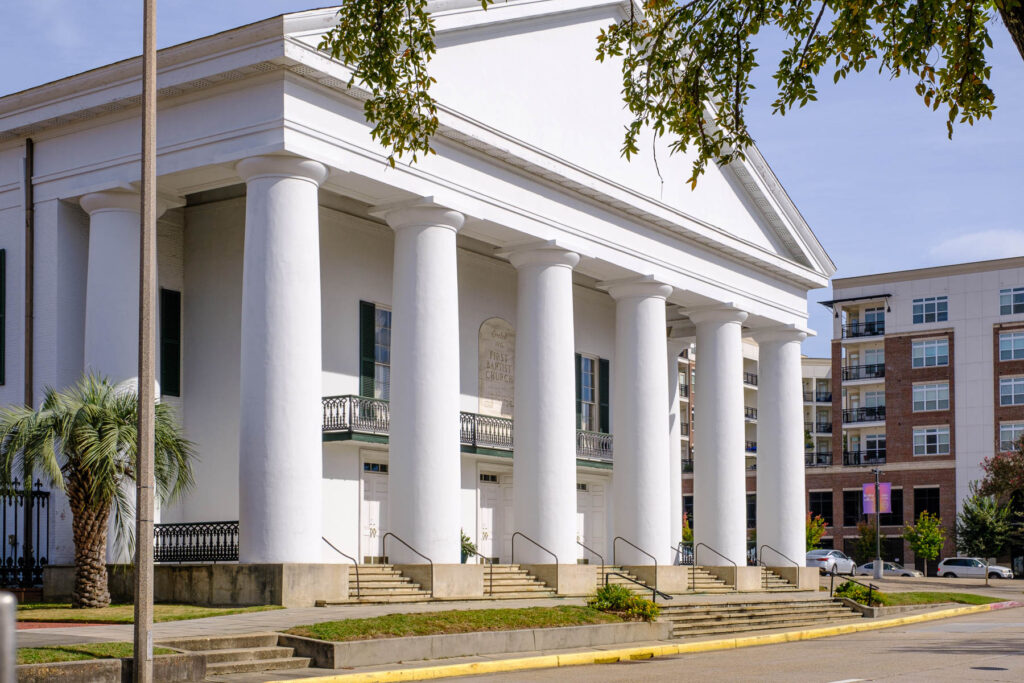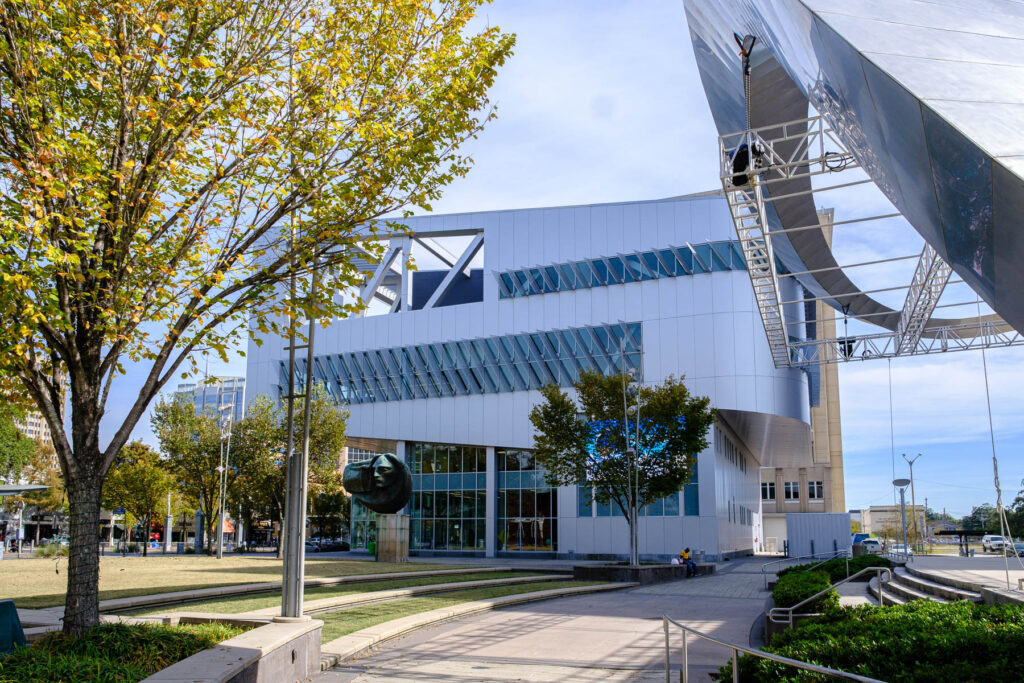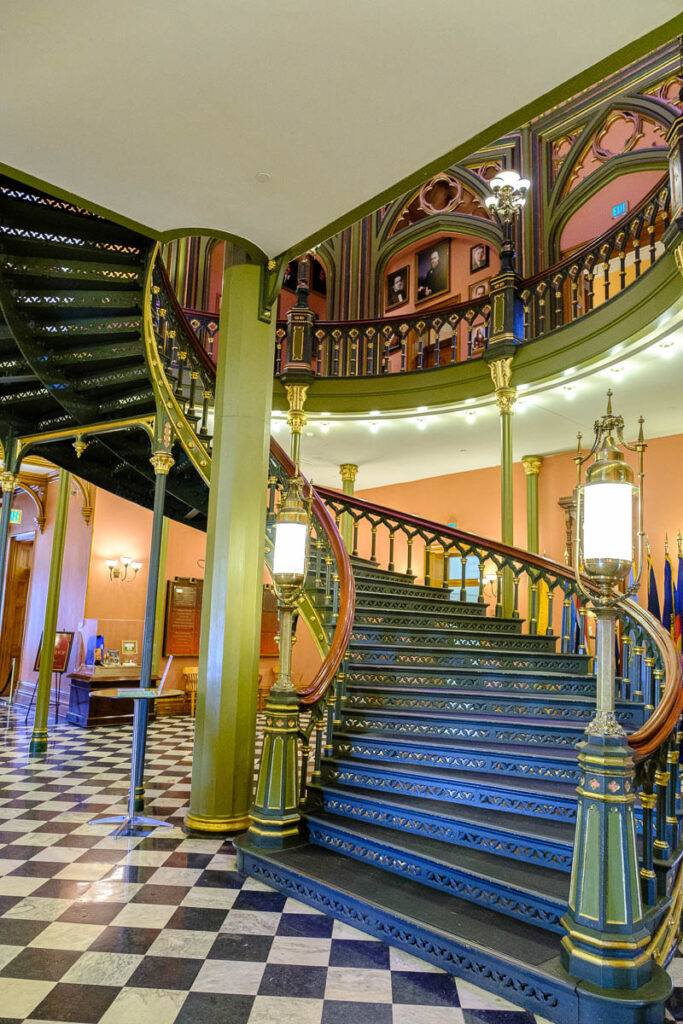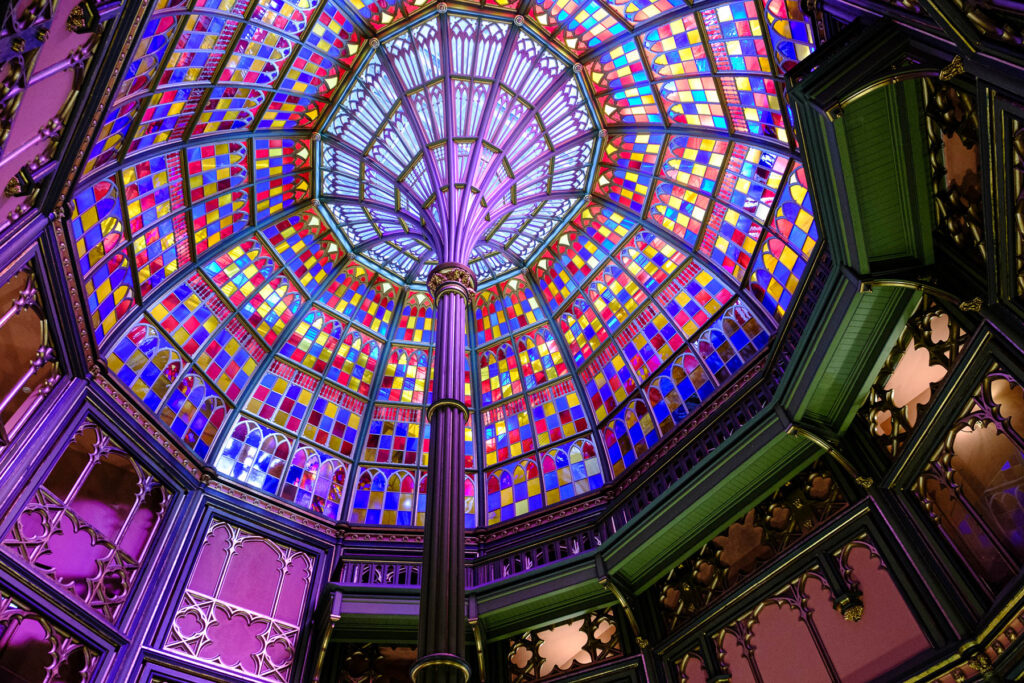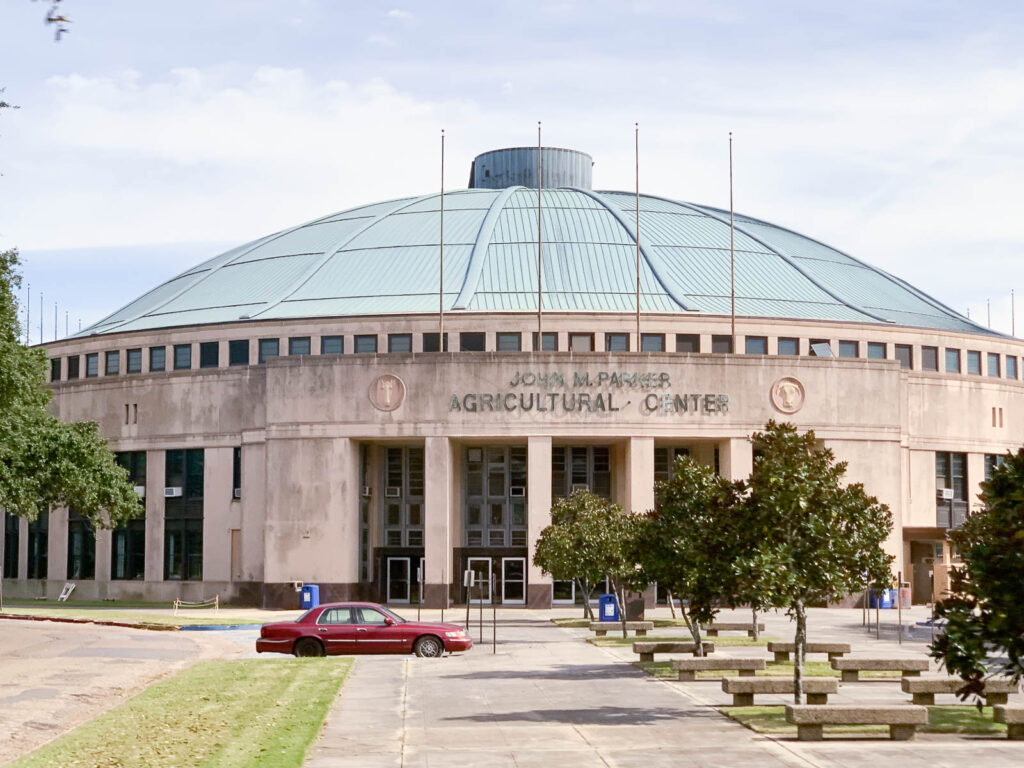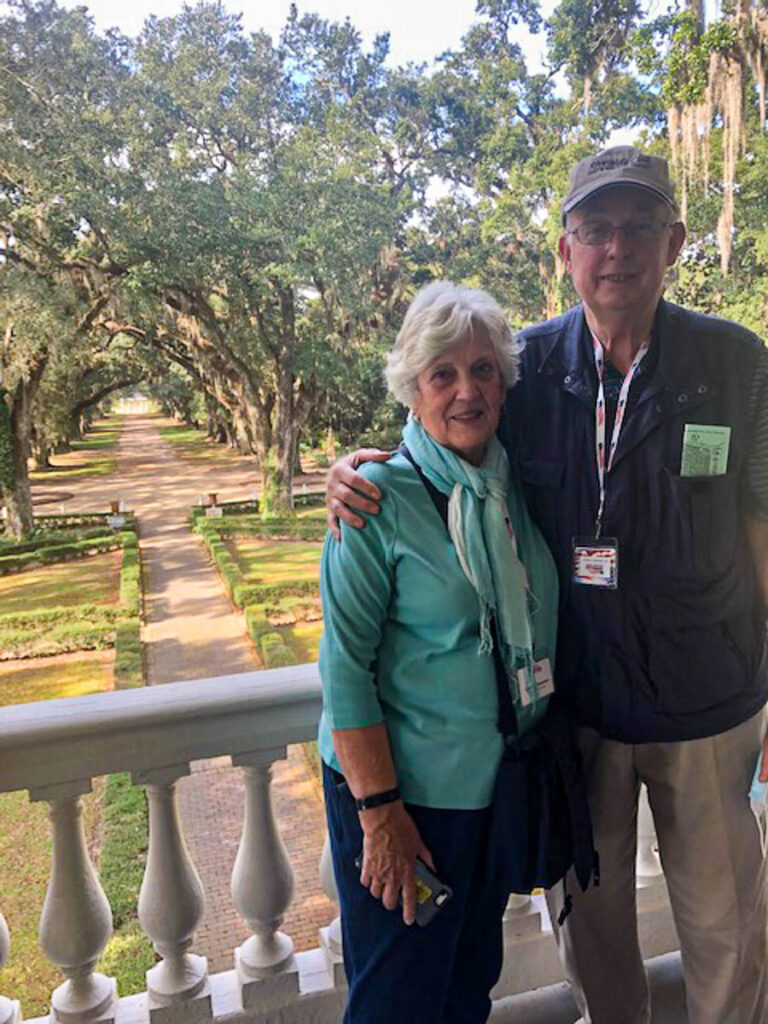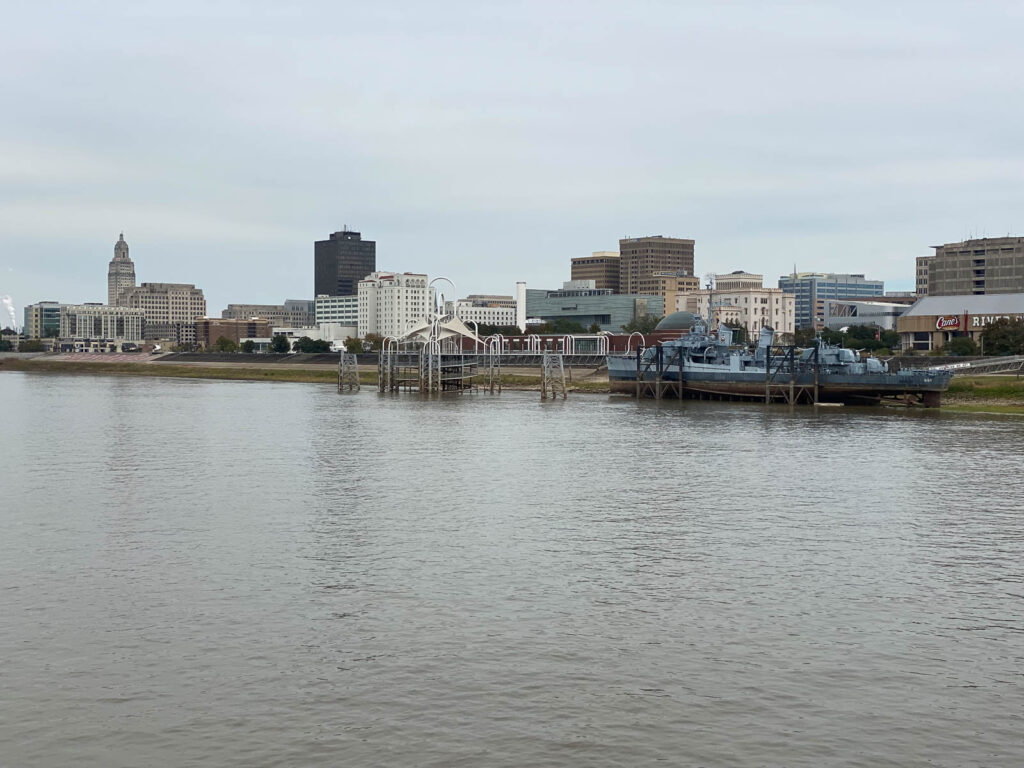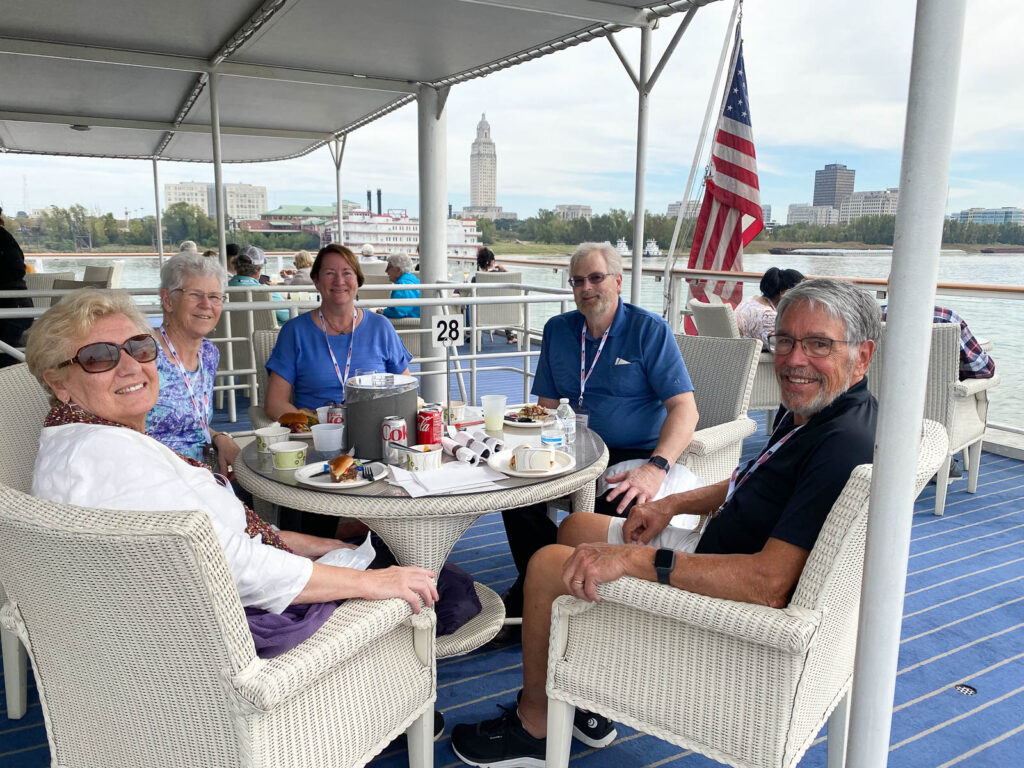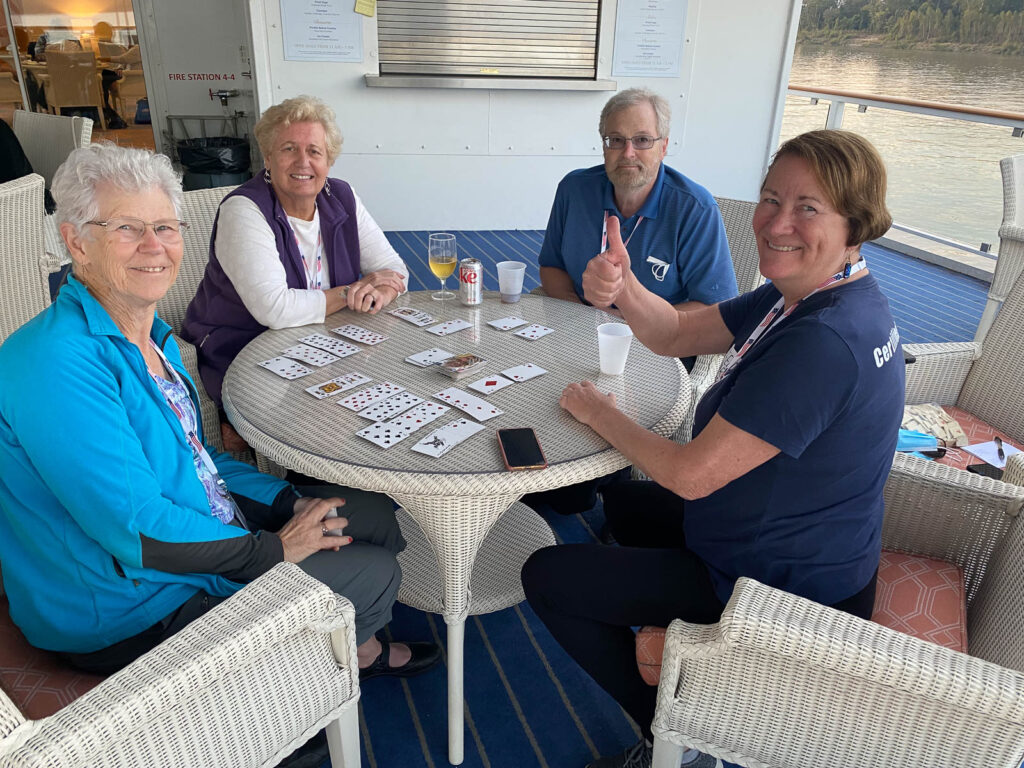Ever wonder where the name Baton Rouge came from? Even the most casual student of French can figure out Baton = Batton as in stick and Rouge = Red as in the River Rouge in Detroit that ran red with Henry Ford’s effluents. The French explorer Pierre Le Moyne d’Iberville came to the present site of Baton Rouge in 1699 and discovered a red stick stuck in the ground. He determined that the stick delineated the boundary between the hunting grounds of two Indian tribes. The Indians would hang their bleeding game on the pole, hence its red color.
I learned this on my walking tour this morning with Emily and two other passengers as we walked around Baton Rouge from one end to the other – 2.5 miles in 2.5 hours. Meanwhile, Judy and Sharon did a bus tour around the city and visited the museum at the Capitol building. Carolyn, Rolande and Steve visited the Rosedown Plantation in St. Francisville. It features one of the few and largest privately maintained formal gardens of the 19th century.
The Old Capitol Building came into being when Louisiana moved its capitol from New Orleans to Baton Rouge in 1847. It seems elected politicians went to New Orleans not to transact the peoples’ business as much as to transact their own private business deals. They also fell to the allure of the French Quarter and the various forms of dalliance available there. A law was passed that the capitol had to be more than 60 miles distant from New Orleans. Baton Rouge, at 61 miles, eventually won out.
The building was designed to look like a castle (see the pictures). Mark Twain thought it looked pretentious. Emily doesn’t think it’s all that bad; I come down on MT’s side.
The Union army used it as a headquarters, prison and garrison. Some genius decided to place the kitchen in the basement. The building burned twice, gutting the interior, and leaving it vacant until after the war. It was then restored by another genius who decided to place wrought iron battlements on the roof. The structure couldn’t hold the weight, the place began to leak, and the iron was removed. The spiral staircase and stained-glass dome were retained. We entered the Old Capitol later in the tour and you can see pictures of both. Later in our walk we got to see the interior.
That brings us to Huey Long, governor from 1928 until 1932 and Senator from 1932 until his assassination in 1935. During his term as governor he, among many other things, was instrumental in the construction of both the new State House and the new Governor’s Mansion.
The new State House took 14 months to build and, patterned after Wisconsin’s capitol, it is the tallest state capitol in the U.S. when Arkansas threatened to build a taller one, Long added more to his to keep it tallest.
Long approached the legislature to build him a new governor’s mansion. They refused his request. So, in the dark of night, Long marched prisoners from the nearby penitentiary down the street to the old mansion and had them completely dismantle the building and throw the furniture in the Mississippi. By morning nothing remained but a vacant lot. Huey returned to the legislature and said, “See here. The constitution says the legislature must provide the governor with suitable living quarters. There is nothing but an empty lot where the governor’s mansion should be. Build me one!” So they did.
In the interim, Long established a suite of rooms in a downtown hotel to serve as his residence. To make his comings and goings secret he had constructed a tunnel linking the hotel, now a Hilton, to the Old Capitol building. He also had constructed a tunnel across the street to another hotel. Some think that tunnel provided easy access to his lady friends living there.
I always thought of Huey Long as a typical Southern politician a la Strom Thurmond. But in fact Long was an ultra-progressive. He opposed Roosevelt’s New Deal because it wasn’t progressive enough. He proposed the Share Our Wealthprogram in 1934. To stimulate the economy, he advocated massive federal spending, a wealth tax, and wealth redistribution.He was a virulent opponent of Standard Oil, claiming it dictated American foreign policy. And, according to Emily, he wasn’t a strong supporter of Jim Crow policies. He advocated separate but equal solutions to racial inequality.
Long was elected to the Senate in 1932 but rather than turning the governorship over to his political rival, the lieutenant governor, deferred his swearing in to the Senate and remained governor until someone more to his liking won election to the governor’s post. Long’s election to the Senate was, according to Wikipedia, brought into question. “There were accusations of voter fraud against Long; voting records showed people voting in alphabetical order, among them celebrities like Charlie Chaplin, Jack Dempsey and Babe Ruth.”
On September 8, 1935 Huey Long was assassinated by Carl Weiss, the son-in-law of Judge Benjamin Pavy. Long had returned to the Louisiana capitol and even though he had no official capacity in State government, he orchestrated efforts to gerrymander Pavy out of office. When the gerrymandering bill passed, Weiss approached Long in the hallway of the capitol building and shot him. Long ran from the building, hailed a cab to take him to a nearby hospital where he subsequently died of his wounds.
Spanish Town is a section of town originally occupied by people from the Spanish Canary Islands who came to Baton Rouge shortly after the Louisiana Purchase around 1805. Emily claims Canary Island blood. Spanish Town houses were largely destroyed during the Civil War. Today it is the host of Baton Rouge’s biggest Mardi Gras parade. The pink flamingo is Spanish Town’s mascot
Raising Cane’s Chicken Fingers is a Baton Rouge success story. Two guys submitted a business plan for chicken fingers made from the most tender part of the chicken breast to a professor at Louisiana State University. The plan received a C- grade. Today the chain has 559 stores and $1.5 billion of revenue. When I taught business classes I graded business plans on the quality of the analysis, not on my guess as to whether or not the business idea was sound.
Here’s what Judy had to say about her trip with Sharon on the Baton Rouge City Experience bus tour. We drove by the Old Governors Mansion and through several neighborhoods. There were many beautiful parks around the city with lakes that give the city a nice green feel.
We then drove to the New State Capital building. I enjoy visiting as many capitals building as I can, so Sharon took pictures of me in front of the Louisiana Capitol building. We were not able to go inside.
We then visited the Capital Park Museum which gave us Louisiana history including the Louisiana Purchase, the Acadian, Creole, and Cajun peoples and Mardi Gras. There was a large section on the history of music which we both really enjoyed. We learned more about Huey Long. There is a large statue of him facing the State Capitol building where he was assassinated.
We then drove around the LSU campus. There are huge parking lots as I think he said 90% of the students drive to the school. Freshman are required to live on campus, but I suspect they do not live there after that. The Tiger is their mascot and we got out to see the real tiger that is in a fenced in area. He was not visible today. A Huey Long story says that the federal government was giving out money to build living quarters for students and Huey wanted to enlarge their stadium, so he got the money and built the dorm attached to the stadium and used the leftover to expand the stadium. A very ingenious person.
We cast off from Baton Rouge at about 12:30 PM and are fighting our way upstream toward Natchez, watching refineries, barge flotillas and the bayous pass by. Judy, Rolande, Sharon and Dave played cards on the Deck 4 stern veranda. A wine party in Dave and Ro’s cabin, dinner and a show recapping 80 years of Broadway musicals and we’re all ready for bed.




